The only limitation to kayak fishing is range. The biggest fish live farthest out to sea and deepest into the bush. In order to reach the best fishing grounds, kayak anglers need a mothership trip to ferry their boats and head for the horizon. Mothership guides specialize in taking anglers to the fish. With their expertise (and motorboat), all you have to worry about is catching fish.
6 Mothership Trips to Take Your Kayak Fishing Farther
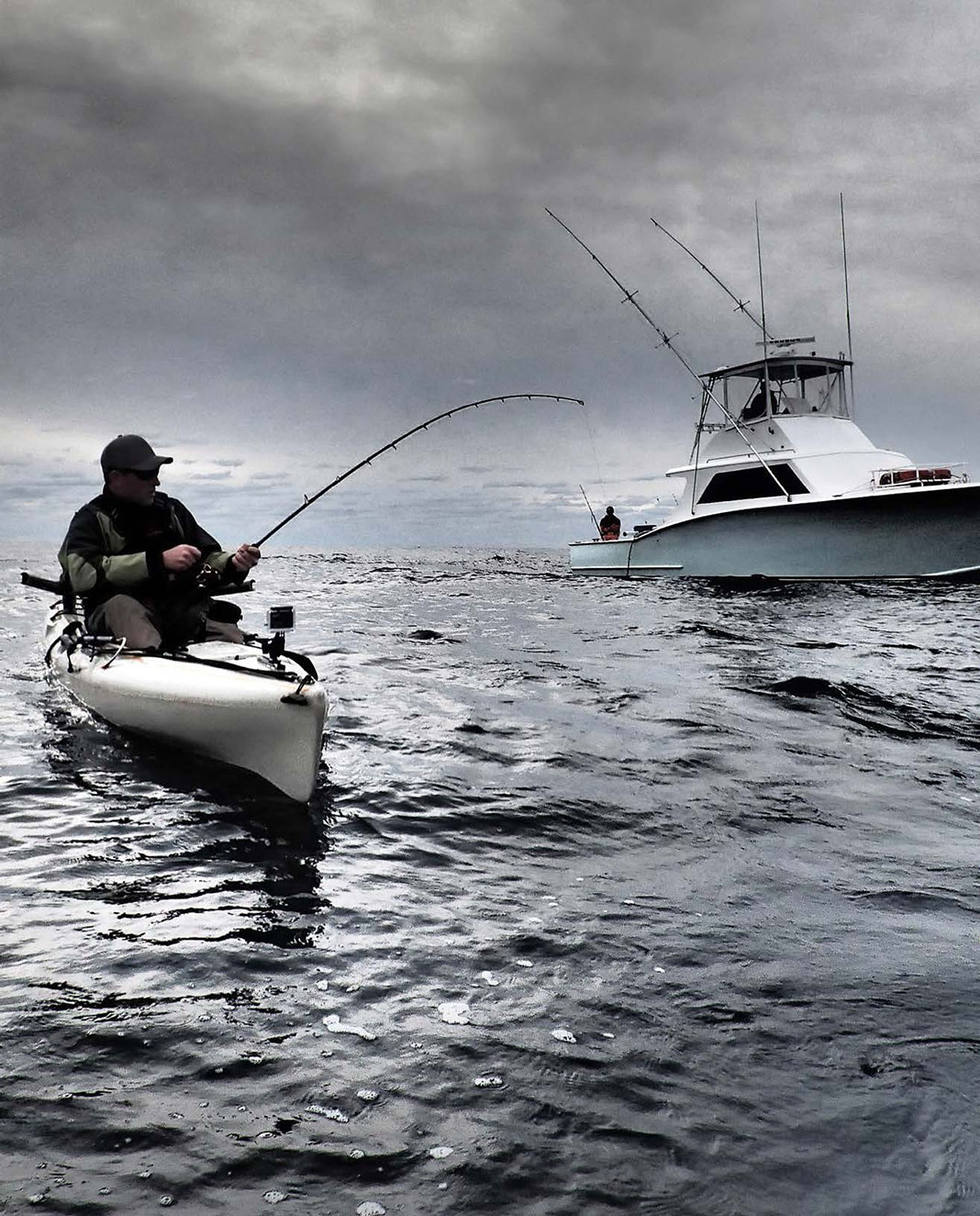
1 Graveyard of the Atlantic
Kayak fish the waters that have claimed more ships, cargo and lives than any other place. Load the kayaks on a classic Carolina-style sportfishing boat and run 20 to 30 miles to the edge of the Gulf Stream. Weather and sea conditions can be a challenge, but professional crew and seaworthy motherships ensure safety. Vertical jig or slow troll for tuna, dolphin, king mackerel and billfish while whales, sea turtles, deadly jellyfish and huge sharks swim past.
Mothership: Custom built Carolina sportfishing boats are world famous for being light, fast and seaworthy.
Captain: Local kayak fishing guide and Wilderness Systems pro Rob Alderman works with a network of local charter captains.
Target Species: Tuna, marlin, dolphin, wahoo, large sharks, king mackerel and amberjack.
Plan of Attack: Leave either Oregon Inlet or Hatteras Inlet before dawn. Launch the kayaks in the bluewater and troll rigged ballyhoo or work vertical jigs. Fish all day and return to dock before sunset.
Best Kayak: Ocean-going 13- to 15-foot kayak.
Tackle Box: Medium heavy to heavy action six- to seven-foot vertical jigging rods matched to high-speed, high-capacity conventional reels spooled with 50- to 80-pound braided line and an 80- to 100-pound topshot. Vertical jigs, top-water poppers. Bait and bait rigs are provided by the crew.
Recommended Gear: GPS and handheld VHF radio. Bow line on an anchor trolley makes loading easier.
Leave at Home: Keep rigging and tackle to a minimum to facilitate loading and unloading the boat.
Required Skills: Ocean paddling skills to combat swift current, strong wind and huge waves common off Hatteras Island.
2 Grand Fishing
Grand Isle, Louisiana, is famous for endless backwaters and epic fishing for trout and reds. To explore the deepest reaches of the bayou, load the kayaks on Calmwater, a converted pontoon boat that can go deep into the bayou through the skinniest water. Husband and wife Danny and Kristen Wray will treat you like family as they shuttle you and your kayak to great fishing and calm water.
Mothership: Calmwater, a 28-foot, open-deck pontoon boat powered by a 90-horsepower Yamaha. Deck is customized to carry kayaks and anglers in comfort.
Captains: Kristen and Danny Wray have been featured in publications and television shows such as Field & Stream and Louisiana Sportsman. The couple hosts the Ride the Bull Kayak Fishing Tournament, the third largest kayak fishing tournament in the country.
Target Species: Speckled trout and redfish.
Plan of Attack: Speckled trout trips start at dawn. Redfish trips can start later. Run six or seven miles, about 30 minutes. Fish tidal creeks, oyster bars, flats, marsh islands and ponds with live bait and light tackle. Typical trip runs six hours.
Best Kayak: A 12- to 14-foot hybrid canoe/kayak is light, easy to handle, stable and full of storage space. Calmwater is equipped with four Native Ultimates.
Tackle Box: Medium action spinning or casting combo with 12-pound braided line and 10- to 30-pound fluorocarbon shock leader. Jigs, soft plastics, topwater plugs and small spoons.
Recommended Gear: Polarized sunglasses, sunscreen, hat and camera with waterproof case.
Leave at Home: Crew provides live bait tackle and bait. Electronics, crates and extra gear make it harder to stack kayaks on the mothership.
Required Skills: Drift fishing and sight casting.
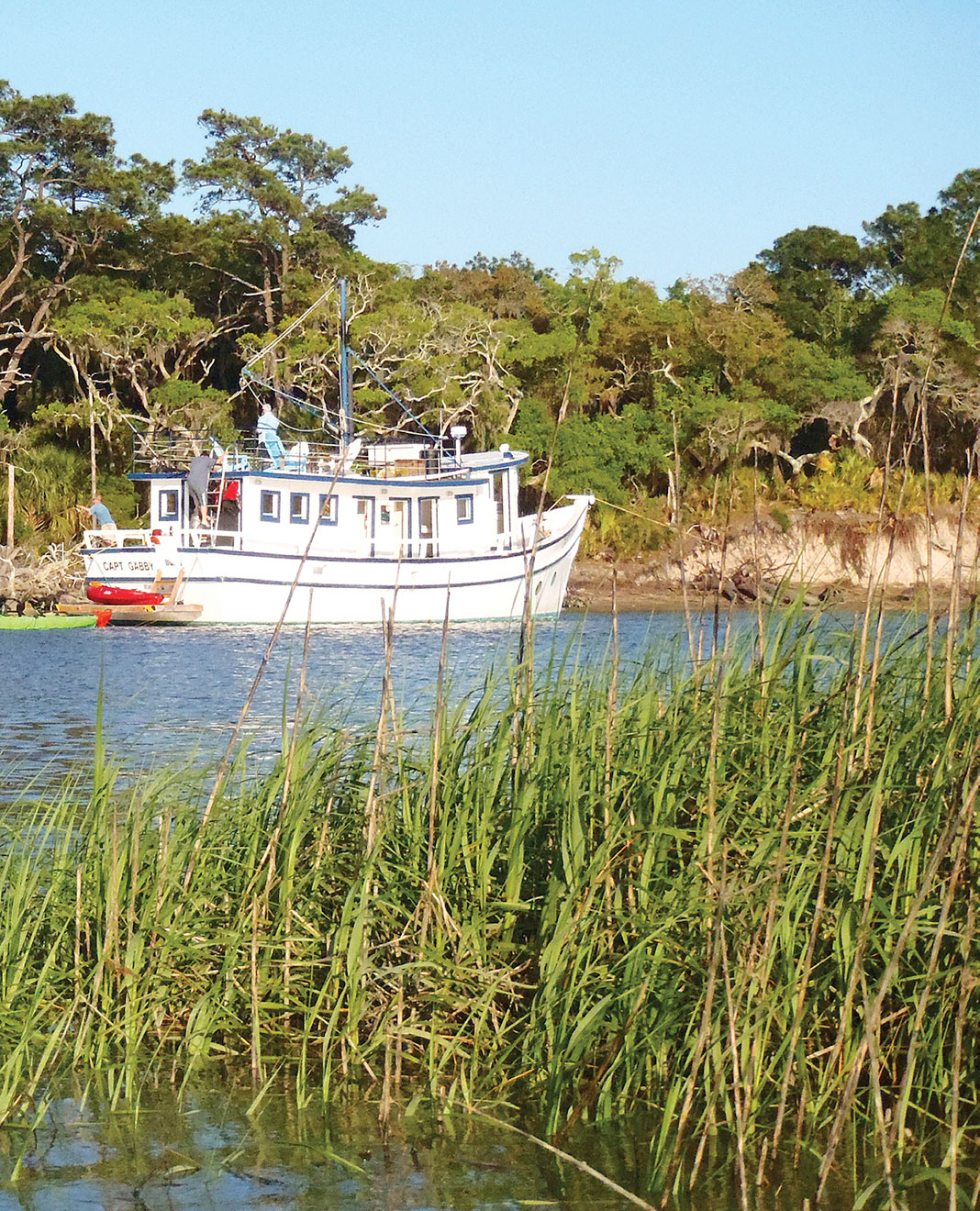
3 Sweet Georgia Fishing
The people in Georgia are famous for their hospitality, and the hospitable crew on Capt Gabby is famous among Georgians. The converted wooden shrimp trawler is outfitted for multi-day mothership trips to the remote backwaters of Central Georgia in style and comfort. Launch the kayaks off the large swim platform and fish all day, then chill out on the rooftop enjoying a cold drink and the sunset. Trips can be customized from full service to self-guided. Whether you go on an afternoon excursion or a three-day bender, you’ll find Captain Patrick Hagan accommodating and speckled trout and redfish cooperative.
Mothership: Capt Gabby, a 42-foot converted shrimp trawler is set up to carry six guests on multi-day excursions. Capt Gabby has a well-equipped galley, hot shower and air conditioning. Kayaks are carried on the roof or railings and lowered to the water with a boom. The mothership cruises at seven knots, but carries a fast skiff for excursions to the most remote fishing holes.
Captain: Captain Patrick Hagan hails from a long line of shrimpers. He and the Capt Gabby host an experienced team of fishing guides.
Target Species: Redfish and speckled trout. Sheepshead, flounder, tarpon and sharks are also possible.
Plan of Attack: Leave the dock at first light. Reach prime fishing grounds in as little as 30 minutes. Fishing locations range from expansive flats to oyster lined channels to open ocean and inlets depending on target species and weather conditions. At the end of the day, crew prepares dinner while anglers relax and exchange fish stories on the deck. The boat spends the night in a protected anchorage far from development and close to the next day’s fishing hole.
Best Kayak: Capt Gabby provides Hobie, Native Propel and Wilderness Systems Tarpon kayaks. Or bring your own kayak rigged for the species and water you intend to fish.
Tackle Box: Tackle is available or bring your own medium action rods and reels. Topwater plugs, soft plastics and small, gold spoons are deadly on trout, reds and flounder. Sharks and tarpon require 8/0 to 10/0 hooks, 100-pound leader and four- to eight-ounce sinkers.
Recommended Gear: Sturdy shoes that can get wet.
Leave at Home: Food and drinks, everything is provided.
Required Skills: Local guides are available for the novice or advanced angler.
4 Backwater Bliss
Captain Jason Stock Fishing Charters
Florida tournament angler Jason Stock has been featured on the front page of the biggest fishing mags including Salt Water Sportsman and Kayak Angler. Anglers fishing with Stock can chase snook, trophy speckled trout, big redfish, tarpon and even flounder in the backwaters and along the beach. And the snook fishing is excellent during the day or in the lights at night. Load the kayaks on his custom built skiff and run deep into the backwater to the land that time forgot.
Mothership: JM Snooky, custom 23-foot Hanson skiff with extra-wide beam to accommodate four kayaks and anglers. Jack plate motor and shallow draft get the boat deep into the backcountry.
Captain: Captain Jason Stock is a kayak and powerboat tournament pro with eight years of guiding experience.
Target Species: Speckled trout, redfish, flounder, tarpon and snook.
Plan of Attack: Run a short distance to prime fishing grounds. Explore crystal clear backwaters sight casting for trophy fish. Night fishing trips are also available.
Best Kayak: Backwater kayak 10 to 13 feet long. Stable for sight fishing.
Tackle Box: Medium light to medium action spinning rods spooled with 20-pound braid and a short leader of 30- to 50-pound fluorocarbon. Topwater plugs, soft plastics and suspending twitch baits.
Recommended Gear: Headlamp for night fishing. Large, wide-brimmed hat keeps angler cool and shades eyes for improved sight fishing.
Leave at Home: Crew provides all rods, reels and tackle.
Required Skills: Sight fishing and stand-up fishing.
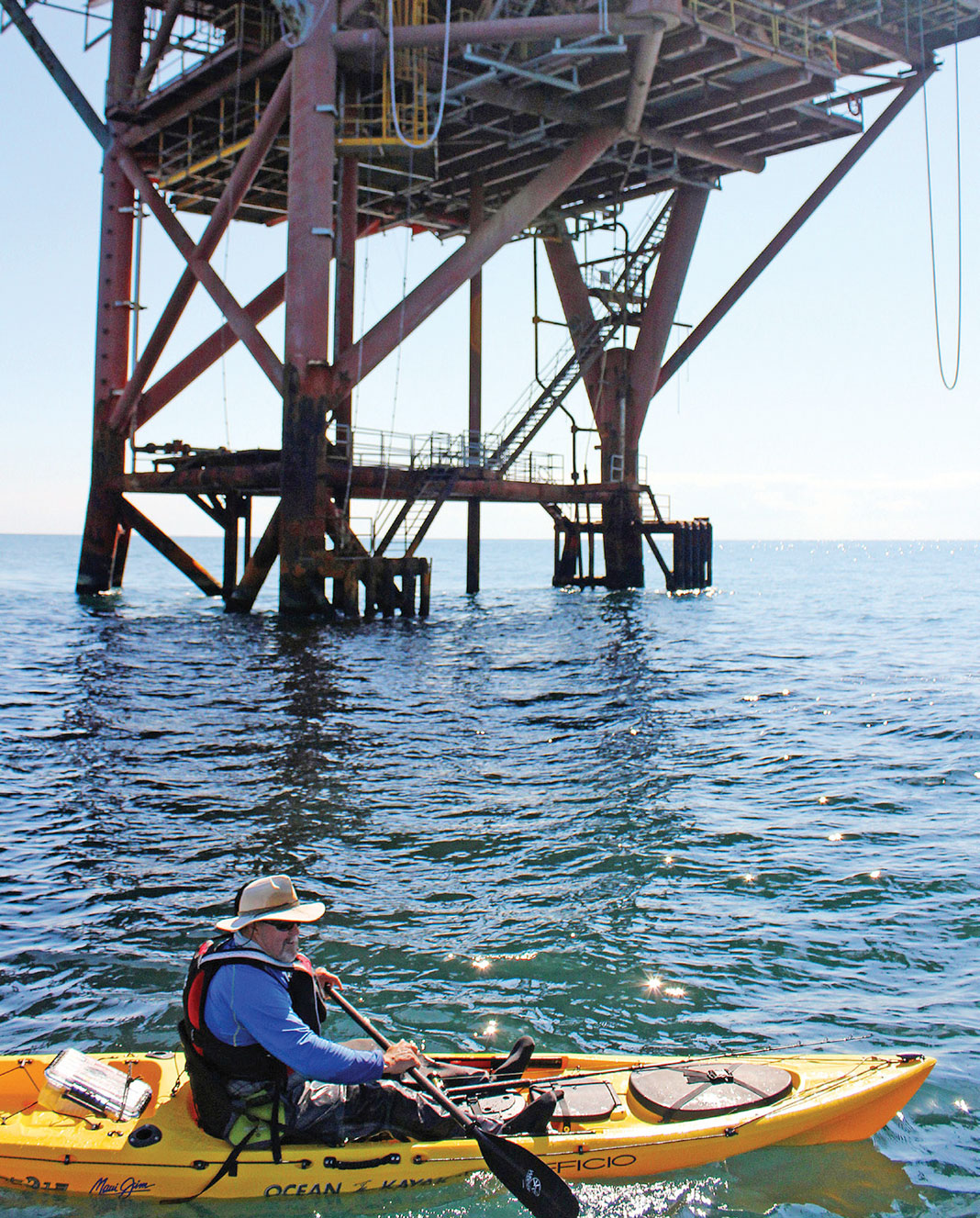
5 Bluewater Blues
Known as Sportsman’s Paradise, Venice, Louisiana, is at the end of the road, at the end of the Mississippi River Delta. But that puts the small fishing village close to the world’s best inshore and offshore fishing. Load the kayaks on a twin-hulled speed boat and weave into marsh creeks and backwaters for reds and specks, or race offshore and fish oil rigs for tuna, billfish, wahoo, dolphin and more.
Mothership: Pale Horse, a 37-foot Freeman power catamaran with twin 250- horsepower Yamaha 4-Stroke engines that push the boat to 40 knots. Carries up to four kayaks stacked on the deck.
Captain: Kevin Beach is a veteran inshore and offshore guide, and was featured on Jim Sammon’s Kayak Fishing Show.
Target Species: Offshore fishing for yellowfin tuna, marlin, wahoo, dolphin, reef fish. Inshore fishing for red drum, speckled trout and flounder.
Plan of Attack: Run up to 70 miles offshore and fish oil rigs with live bait or vertical jigs. Or, fish inshore and search beaches, marshes, creeks and canals for redfish and speckled trout with light tackle and artificial lures.
Best Kayak: Open-water capable 12- to 13-foot kayaks. Shorter, lighter boats are easier to load and unload. Keep rigging to a minimum.
Tackle Box: For offshore, medium heavy to heavy action six- to seven-foot vertical jigging rod matched to high-speed, high-capacity conventional reel spooled with 50- to 80-pound braided line and an 80- to 100-pound topshot. Vertical jigs, top-water poppers. For inshore, medium action spinning or casting rod spooled with 10-pound test braided line and a two-foot leader of 20-pound fluorocarbon. Jigs, topwater plugs and small spoons.
Recommended Gear: Handheld VHF radio mandatory. Rod leashes.
Leave at Home: Fish finders. Boat finds the fish and electronics take up time and space.
Required Skills: Fighting and landing large pelagic fish. Large sharks are common competition for your catch.
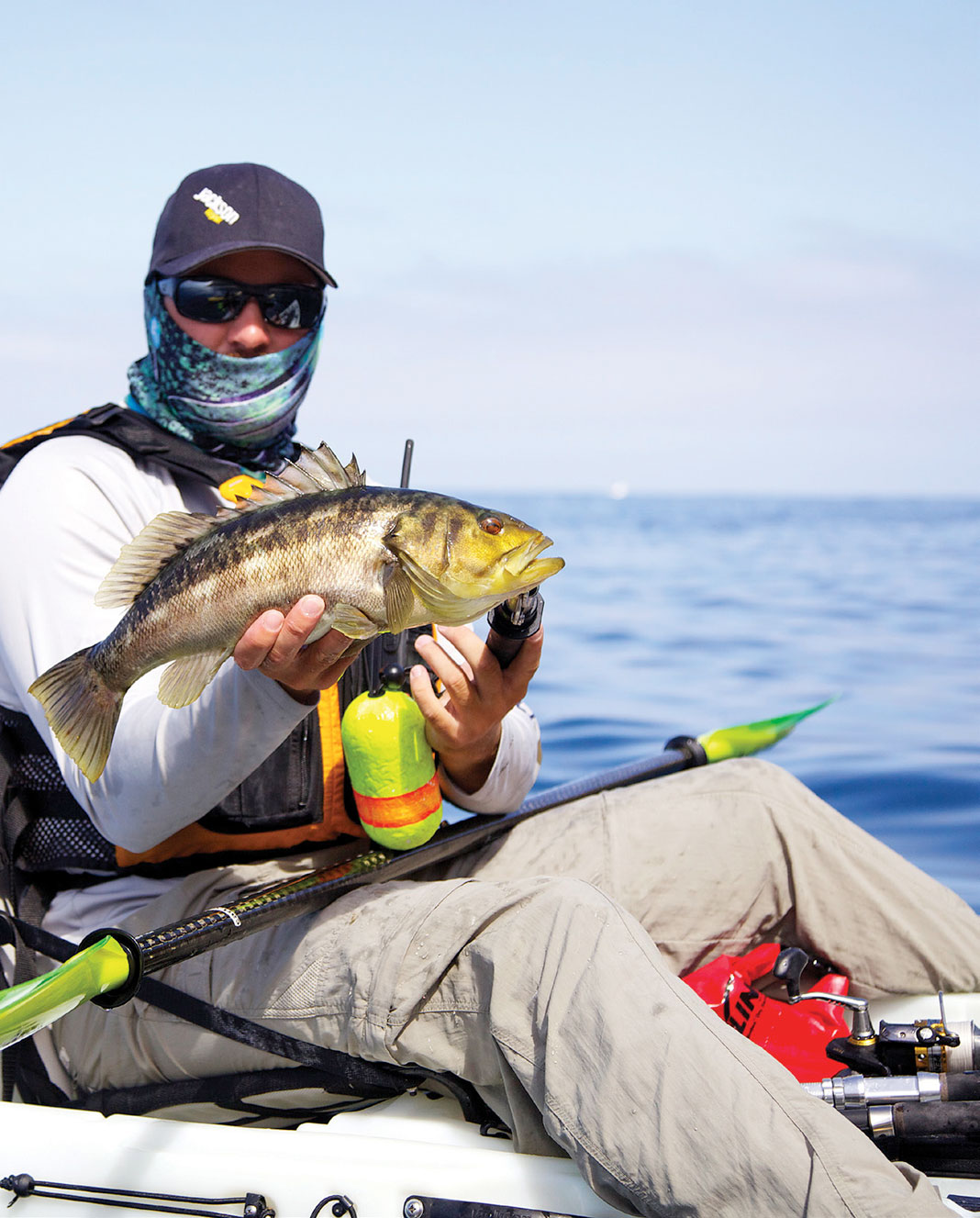
6 Island Time
The rocky islands off San Diego, California, are famous for cold water and hot fishing. But getting to these isolated rock outcroppings can take hours or even days. The long-range fishing boat, Islander, is bringing the most prolific islands closer to kayak anglers. Load your kayak on the custom kayak rack, kick back in the salon, enjoy a five-star meal and fish around the clock.
Mothership: Islander is 85 feet long and 24 feet wide with 11 double-occupancy rooms and a full-service kitchen. Large swim step, custom kayak rack and a tender skiff are kayak-fishing friendly.
Captain: John Conniff has led more than 10,000 anglers, divers, paddlers and adventurers to the islands around San Diego.
Target Species: Halibut, white sea bass, calico and yellowtail.
Plan of Attack: Trips range from one-and-a-half days to two-and-a-half-day overnighters. Leave at 8 p.m. and load up on bait and then run through the night. Arrive at 6 a.m. unload kayaks, fish all morning. Tender brings fresh bait and picks up catch. Mid-morning the boat repositions and anglers meet for lunch. Continue fishing down the island and meet the boat late in the afternoon.
Best Kayak: Rent a kayak or bring your own. Coastal kayaks from 12 to 15 feet handle open water and ocean swells.
Tackle Box: Light-action casting rods spooled with 12-pound braided line and three- to six-inch swimbaits. Heavy action casting rod with 30- to 50-pound braided line to fish bait for white sea bass and halibut or throw jigs to yellowtail. Bring a gaff to land larger fish.
Recommended Gear: Gaff, live well and bait bucket, as well as cold-water outerwear.
Leave at Home: Food! Breakfast, lunch and dinner are prepared by a professional chef.
Required Skills: Cold water paddling, gaffing large fish, jigging and casting.
The mothership connection. | Feature photo: Jack Daughtry

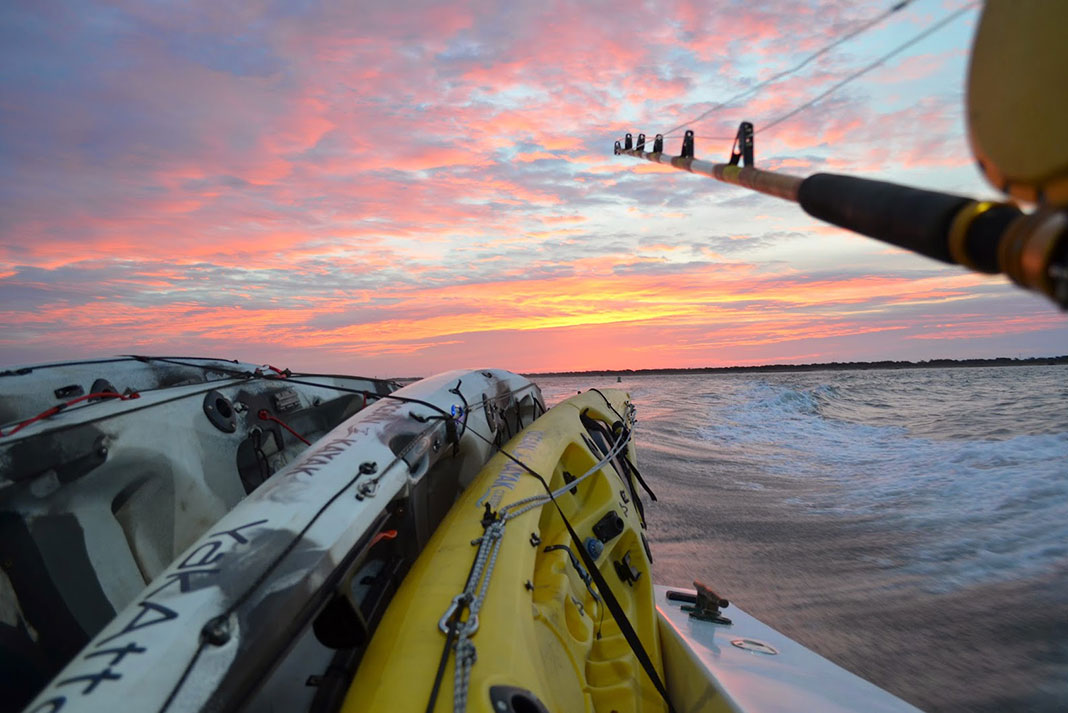


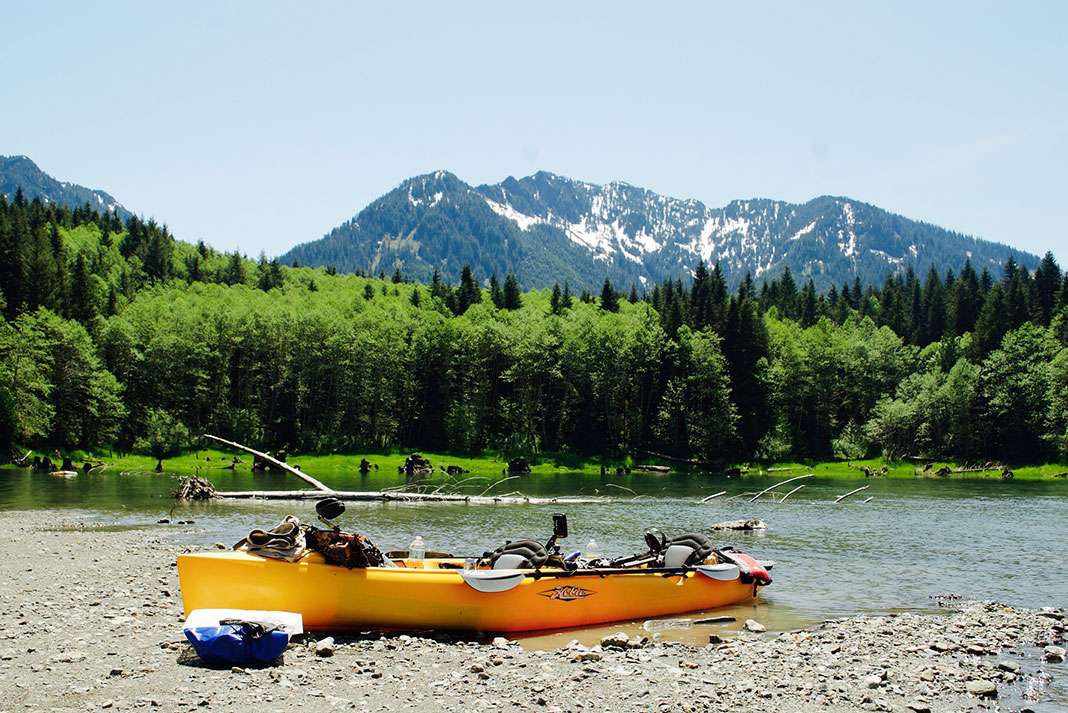










I need to upgrade – if I take my ‘yak in the ocean I’m a gonner. Lol